Are you just getting started with Facebook ads? Want to know the advertising mistakes we see most often and what to do instead?
If you’re new to Facebook Ads or have had years of experience, one thing is for sure, the ad settings, layouts, opportunities and even strategic advantages keep evolving. So, from someone who spends their days (and many nights) living in Facebook Ads Manager, my goal is to help you create ads that perform stellar and to help you avoid these top 9 mistakes I see most often.
In this article, we’ll cover the 9 top advertising mistakes we see and suggest ways in which you can avoid those and create campaigns and ads that perform.
Mistakes Happen
We’ve all been there… It’s easy to make mistakes, especially when you are new to creating Facebook ads or even if you haven’t launched a campaign in a while. Advertising and platforms are constantly evolving, so it happens. But we’ve got your back! Use this guide as your secret weapon to make your campaigns work how they’re intended to.
If you need any help with your Facebook campaigns, setup or consulting, feel free to reach out to us.
Now, for the few, the brave and the willing. Let’s dive in to amp up our Ads!
#1: Not Having Your Facebook Pixel Installed
Yep, this one is a big one and honestly the one that is essential! The Facebook Pixel helps tell the story of what your ads are doing to impact your end goals. Ad performance can only be fully measured by the actions taken and for many Advertising Managers this snippet of code is what we like to call “job security” as it’s literally how we show the ROI results of what we’ve spent to what’s been gained as a result.
The Facebook Pixel is the foundation of your Facebook advertising.
It provides you with three benefits:
- Conversion tracking
- Audiences
- Analytics
Conversion Tracking
When people go to your website and complete desired actions such as calling your business, or purchasing from you online, these are called conversions. Conversion tracking is when you track these conversion events using the Facebook Pixel.
Some websites such as Shopify and WooCommerce set up your conversion tracking and events automatically when you install your pixel on their platforms. Others you may have to use tools or work with a developer to set up.
After your conversion tracking is properly set up, you can create some of your most valuable audiences.
Audiences
The Facebook Pixel uses cookies to track people who have visited your site. You can then leverage the pixel to generate audiences based on website visitors and people who have completed specific conversion events (such as a purchase).
The pixel can track if someone has added items to their cart, but hasn’t completed a purchase. If you have this data, you can then create a remarketing ad which reminds the customer to return to your store and complete their purchase. Not only that, you can track analytics of your audiences with the Facebook Pixel.
Analytics
The last main benefit of having the Facebook Pixel installed is to be able to look at analytics. When you get enough website visitors, you can use the pixel to track analytics in your Ad Account.
You can view data such as what your purchase conversion rate is, how many new website visitors you’ve had, what age people are that visit your website, and more. If you have conversion events set up properly, you can see specific conversion information such as demographics of people that buy from you.
Your Facebook Pixel is extremely valuable for your advertising efforts. The pixel cannot retroactively collect data, so it’s important to install it as early as you can.
To Do: Make sure your Facebook Pixel is installed on your website.
#2: Not using the right Campaign Objective
To get to where you want to go you first have to know where you’re going... At least I think that’s how the quote goes. But seriously, the campaign objectives allow you to layout your ads for the results you’re wanting to obtain, so it’s super important to understand the difference between each campaign objective. Let’s break it down shall we?
When you go to create a campaign, you’re met with the following menu:
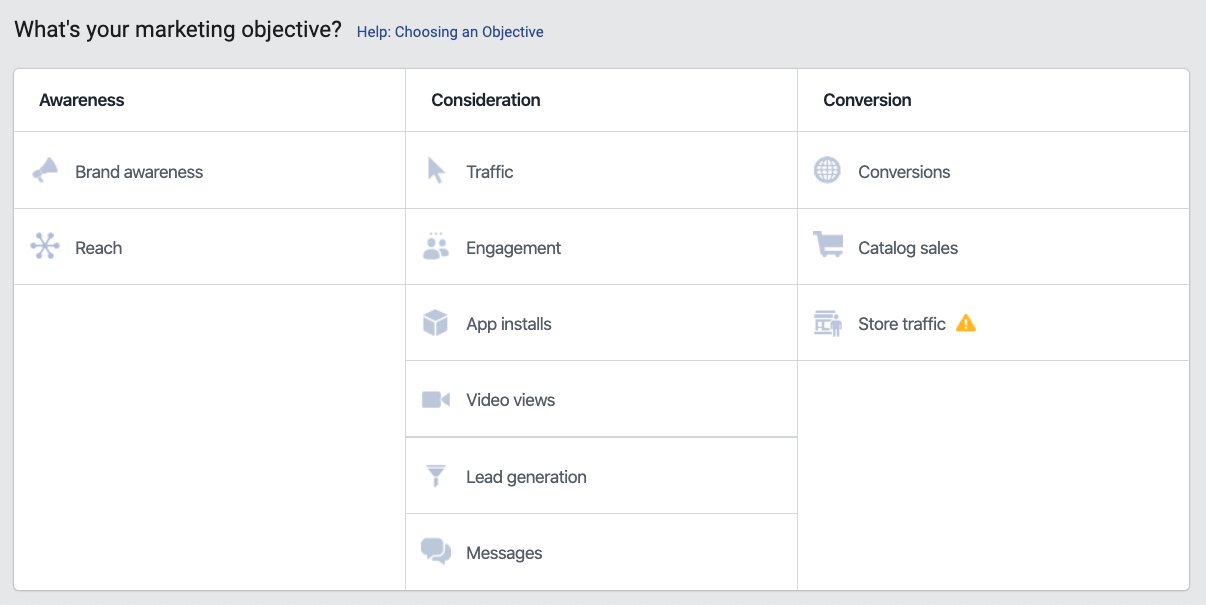
CAPTION: The menu for selecting your campaign objective in Facebook Ads Manager.
One mistake we often see businesses make is selecting the wrong campaign objective. People may choose a certain objective, such as “Brand Awareness” or “Traffic” because they’ve heard they are the cheapest objective type to run. While these ad campaigns may be cheaper, they won’t help you achieve your business goals if they are not aligned with what you are trying to accomplish.
Facebook optimizes your campaigns for the objective you choose. For example, if you choose the “Video Views” objective, Facebook will show your ads to people who often watch videos online. Likewise, if you choose the “Traffic” objective, Facebook will show your ads to people who are clicky users that like going to a bunch of different websites often.
Know that when you target an audience, Facebook shows your ads to people in that audience who they think are likely to take the action you want them to take. Once an ad starts to work in accomplishing your campaign objective, Facebook will show that ad to more people like the others who have completed the action. This is why it is very important to pick the right objectives.
“Choose the campaign objective that directly aligns with what you want your targeted audience to do and Facebook will optimize your ads to make that happen.” @NOWMG
If you want people to buy your products, choose the “Conversion” objective and optimize for the “Purchase” conversion event.
Note: You’ll want at least 50 conversions a week for Facebook to be able to optimize properly. If you won’t reach that number, you may want to optimize for “View Content” or “Add To Cart” instead.
To Do: Write out your advertising objectives. Then figure out which campaign objective aligns with that business goal you have.
Now that you know how to pick the right objective, we can talk about another mistake that’s related to objectives.
#3: Not having conversions tracked properly
Pixels are great but events are so much more exciting. Yep, I’m a nerd and I’m going to show you why you’ll love nerding out on this part too.. because this is what separates the good from the great!
Having the Facebook Pixel installed on your website doesn’t necessarily mean you have the proper conversion tracking set up. Again, conversions are the important actions you want your website visitors to take.
For example, you may want people to sign up for your email list, complete a form, or purchase one of your products. If you are running advertising campaigns and you want people to complete an action on your website, you’ll want to set up conversion tracking. With conversion tracking set up properly, you can then choose the “Conversion” campaign objective and optimize for the result of that specific conversion.
For example, if you are wanting to optimize for purchases, you can select the “Purchase” conversion event after it has been set up in the campaign’s ad set:
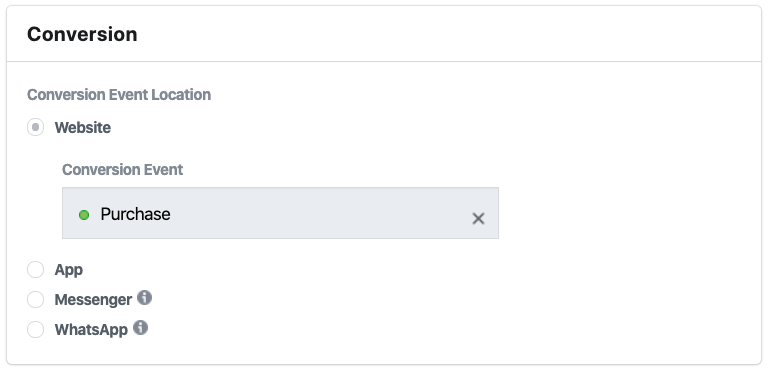
An ad set that has the “Purchase” conversion event selected. Facebook will then optimize for these conversion results.
Additionally, you can generate audiences based off of conversion events. This works wonders if you are wanting to exclude people who have already purchased from you in certain campaigns. Say you want to create a coupon code for a first time customer special, you could create a campaign that shows to a new targeted audience and exclude anyone who has purchased from you before.
In another case, you may want to advertise to people who have already shopped with you. If you’re wanting to remarket to people who purchased from you a few months ago, you can leverage this to set up a campaign that shows past purchasers your new products.
To Do: Ensure conversion tracking is set up for each of the valuable actions you want people to take on your website.
Another beautiful thing about conversions is you can use them to see exactly which ad is performing the best. You can add columns in Ads Manager to view your specific conversion event and see how many conversions each ad has led to. For the purchase event, you can see how many actual dollars in sales each ad has brought in for your business.
Without conversion tracking properly set up, you won’t know which ad is bringing in the most cash for your business.
#4: Selling too early
The best things take time, so slow down there Karen. Let’s not pay for ads that will scare away all the customers. We want sales too, but there is a formula that will take your digital advertising goodness and turn it into profit.
We often see business owners push selling too early when it comes to their advertising. People will not buy from you until you have won their trust first. It’s best to start by introducing your product or your brand to them. From there show how you’re different from competitors, THEN ask for the sale.
You’ll want to run advertising campaigns that go from:
Awareness → Consideration → Conversion
To make your targeted audience go from:
Know → Like → Trust
An easy way to start your awareness campaign is to focus on providing VALUE. Do you have a valuable resource or can you make a downloadable guide that answers some of your prospective customers’ main questions they have about your product or service? Can you create educational videos to run as an ad?
Introduce your brand by providing value to your customers, so they start to know and like you. From there you will have captured some attention from your prospects. You’ll then want to remarket to them and lead them to look around your website and at your products/services.
In the consideration phase, work to show why your product/service is the best. Show how your product or service solves your prospect's pain point and is the best option for what they need.
Lastly comes the conversion phase. Here you will remarket to those that have viewed your products or services but haven’t purchased from you. You’ll want to overcome any objections your prospects may have by showing credibility, reviews, a guarantee/warranty, and/or testimonials. You might try to incentivize them with something such as a free shipping code or a bonus offer as well.
Note: The value of your product/service can have a big impact on how much you’ll have to work to warm up your audiences to purchase from you. If you are selling a $20 product, people are more likely to buy it off of emotion compared to something that costs thousands of dollars.
To Do: Plan how you can provide VALUE to people that may be interested in your products/services but haven’t heard about your brand before. Put yourself in their shoes and think about what they may be looking for and the solutions your product/services solves.
That brings us perfectly to the next big mistake, not doing enough research on prospects.
#5: Not doing research
You know how they say to always pick option “C” on multiple choice questions if you didn’t study? Yeah, well that never worked out for me either. The actual best way to get the right results is to do a little studying..
Oftentimes business owners and advertisers think they know why people buy from them, but they’re wrong. Have you asked customers why they have purchased your products or done business with you? What made them make the decision to choose you over a competitor? How did they find your products/services? What made them trust you? If you don’t know what the majority of your customers would answer to those questions, then you need to dive into doing research.
You’ll want to talk with past customers, read reviews, or talk to ideal customers about their pain points. Figure out the main problem that your product/service helps people solve.
A great example of this is when I used to go to a barbershop near my house. On the outside of the barbershop the owner had a sign that read “$15 Haircuts”. The business owner thought people went there for the low cost of a haircut. In reality, I and many others were busy working professionals, so we went to this particular barbershop because we could get in and out of there quickly, without having to wait. The business owner thought he knew why people were shopping there. In reality, he wasn’t in tune and didn’t do the research with his customers.
This is why it’s extremely important to talk with your customers. The more you can dive into WHY people are buying from you, the more you can mention that in your advertisements, in your creative, on signs, on the phone, and on your website.
To Do: Ask your customers why they chose you.
#6: Not remarketing
Have you ever looked at an item in an online shop, left without buying, and then BAM got hit in the face with an ad showing you that exact same product on Facebook or Instagram? That is the power of remarketing! Remarketing is when a company shows ads to people that have recently visited their website.
Imagine you’re on Facebook and you see a friend post about a new product. You might go to the website and look at the product to learn more about it. You may even Google it to see if there are other products out there that compare. If the product is more expensive, you’ll probably sleep on it or think about it for a while to see if you actually believe that it’s worth it.
Now let’s flip the viewpoint. Imagine you’re a business owner and you’ve just had someone come to your website because they heard about your products from a friend. They’ve shown some interest by visiting your website, but they aren’t quite sure if your product fits their needs and does the job.
People often don’t buy the first time they visit a website.
As a business owner, wouldn’t you want to nudge those people just a little bit to see the value your product/services provide?
“If you’re not remarketing, you’re losing a big chunk of your potential customers.” @NOWMG
Website visitors and people that engage with you on social media are considered “warm” or even “hot” leads. These people are showing signs of interest. Remind them to come back and shop with remarketing ads. Get them over any objections they may have.
Pro tip: If you offer any guarantees, warranties or have a free return policy, mention it in your remarketing ads. This can help people see that they have nothing to worry about when it comes to purchasing from your brand.
To Do: Create an audience of website visitors and set up a remarketing campaign that reminds them to come back and shop.
But before we can remarket, we need to work on getting website visitors with ads that people pay attention to.
#7: Using creative that doesn’t catch attention
When people are scrolling through Facebook and Instagram, they are looking for images and videos that catch their attention. A big mistake we often see businesses make is when they launch ads with creative that are mediocre.
Businesses often create videos that are similar to movies they might see at a theater. They may have a slow introduction, show the title, and start to build up the storyline. This is a BIG mistake.
You don’t want creative that is similar to movies in theaters because the audiences are in a different place. When people go to movies they pay for a ticket, so they are more indebted to see what happens in the movie. They are willing to wait longer because they have paid to watch the video from start to finish.
In contrast, people scrolling through Facebook and Instagram aren’t there to watch your videos, they are there to be entertained or to catch up with friends and family. You can’t treat these two scenarios the same when in reality, they are the complete opposite.
Want to get better at creating images and videos that pop off of the News Feed? The next time you’re scrolling through Facebook or Instagram, notice what catches your attention and makes you stop scrolling. Write down what you see, so you can later reference it when creating your images and videos.
There’s a lot of noise on social media platforms, and your creative has to cut through that. The first thing that makes people stop scrolling is the creative, so you really want to ensure you have something worth stopping for.
Pro tip: Add a little clarity and contrast to your images/thumbnails, so they stand out even more online.
When creating video, make sure there’s a hook that captures people’s attention within the first 3-5 seconds. Then, if possible, try to add motion or transition to the video every 5-10 seconds to keep people watching. This can be as simple as adding some text or an icon that pops up as you’re talking about it. The key is to keep people engaged and not bored with the same angle for too long.
To Do: Scroll through Facebook or Instagram and write down why different images/video made you stop scrolling.
#8: Writing boring copy
If your messaging doesn’t resonate with your targeted audience, your products will be nearly impossible to sell. As crazy as it sounds, your copy should either repel or attract people to your brand. If your copy doesn’t stand for anything, doesn’t have a strong voice, or reads like every other company’s, then you are writing boring copy. Boring copy doesn’t get people to take action.
Your ad copy should make your ideal customer feel understood (this comes back to doing research). The more you can speak to your ideal customer’s pain points, the more your messaging will resonate with them. Make them feel like they belong.
Not all of your ads have to be salesy, especially not your awareness ads. Think about ways you might be able to empower, inspire, educate or entertain your targeted audience. You can even write ads that ask questions and get people to provide feedback. Leverage that feedback to create new products or new versions of ad copy.
To Do: Review how people talk about your brand and competitors. Incorporate that lingo into your ad copy.
#9: Not telling people what to do next
Have you ever been to an event that was disorganized? You may start wandering around looking for someone to ask, “where are we supposed to go?” or “how do we check in?”. Depending on the event (and how good the food is), you may just leave altogether because it’s just not worth the trouble. We see this same situation happen with ads and websites.
This problem is even worse with ads and websites because you don’t have someone there to help confused customers. Because of this, you really want to be clear and concise on what you want people to do next. Reduce any vagueness, which can add friction to your targeted audience.
For awareness ads, this can be as simple as asking a question. For consideration, you could suggest your targeted audience goes to your website to learn more about your products/services. And for conversion, you might have a stronger call to action, such as to shop now. If you don’t tell people what to do next, they might not know what that step even is, so tell them.
Incorporate this into your videos as well. At the end of your video ad, people might have just loved what they watched, but if you don’t tell them what to do next they may start scrolling again. Instead, you can have a simple ending that shows your logo and has text that says “Shop now.”
To Do: Make sure all of you ads have some sort of call to action, telling viewers what to do next.
Conclusion
Is it just me or are you feeling energized and excited right now too? I mean, you just completed this guide on what to tweak and now you’ve got the goods to launch 🚀 your ads into the next level of awesome. I think that deserves a little pat on the back if I do say so myself.
So the next question is, what are going to do with this information? I can speak on behalf of everyone at NOW Marketing Group to say we can’t wait to see what you start creating!
Here’s the list one more time to recap:
- Not having your Facebook Pixel installed
- Not using the right Campaign Objective
- Not having conversions tracked properly
- Selling too early
- Not doing research
- Not remarketing
- Using creative that doesn’t catch attention
- Writing boring copy
- Not telling people what to do next
Use this article as a resource to leverage in the future. Make sure you have your foundation in place with the Facebook Pixel. Set up all of your valuable conversions that you want to measure and track. Use the right Campaign Objective that aligns with your business goals. Don’t sell too early, but instead share value and help your targeted audience first. Do the research. Talk to your customers and see why they’ve purchased from you instead of competitors. Remind people to come back and shop. Remarketing can be some of your most profitable campaigns. Grab attention with creative that pops and copy that resonates. And lastly, tell people where to go next, so it’s clear.
Which one tip will you implement today? Let us know in the comments!

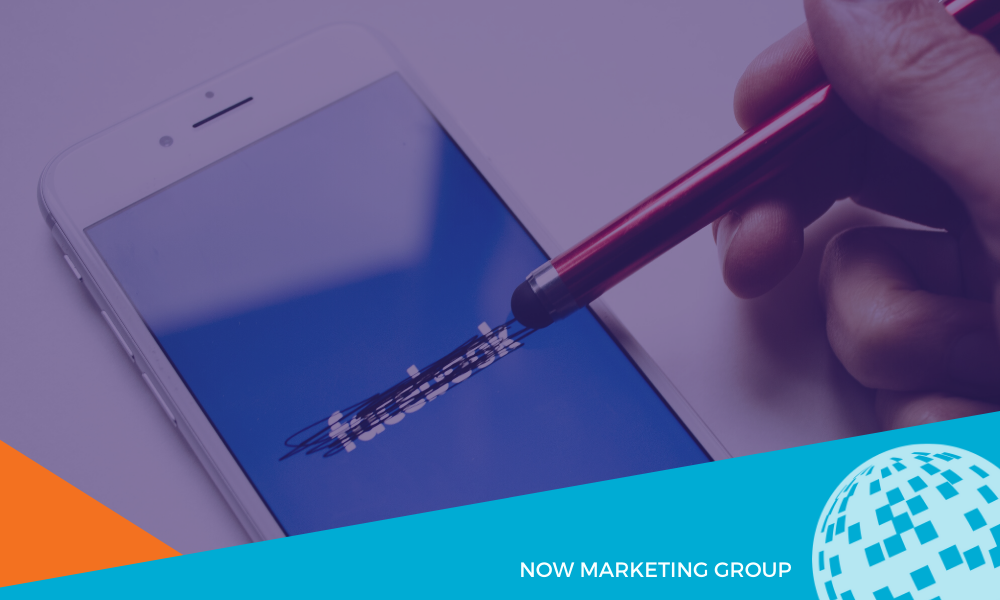
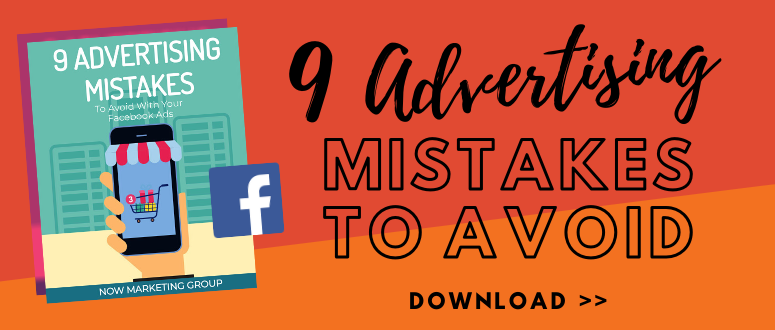
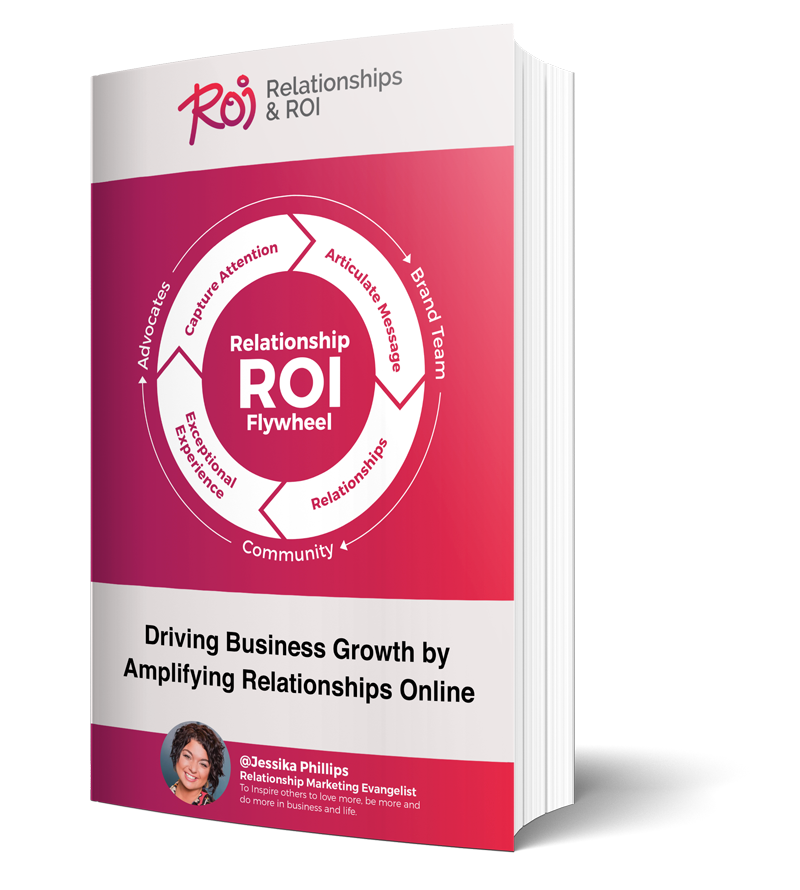
Comments